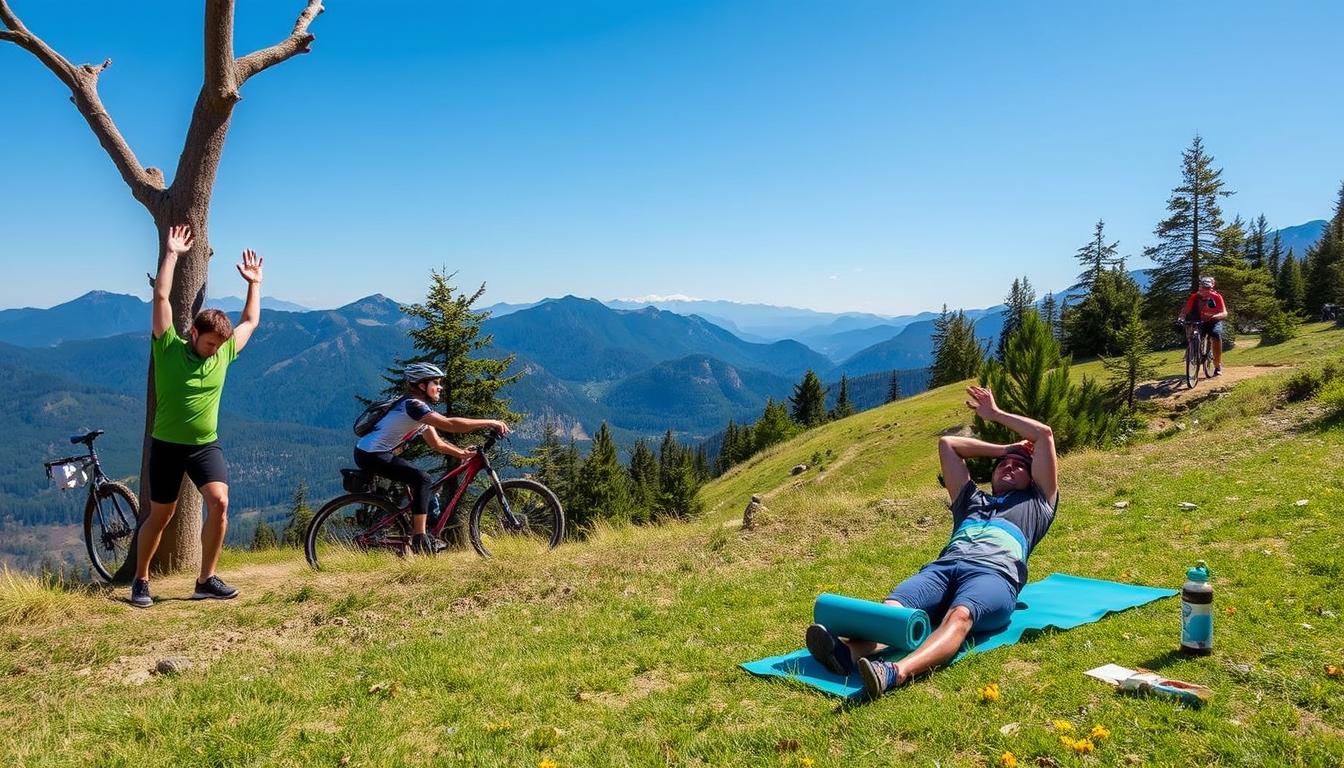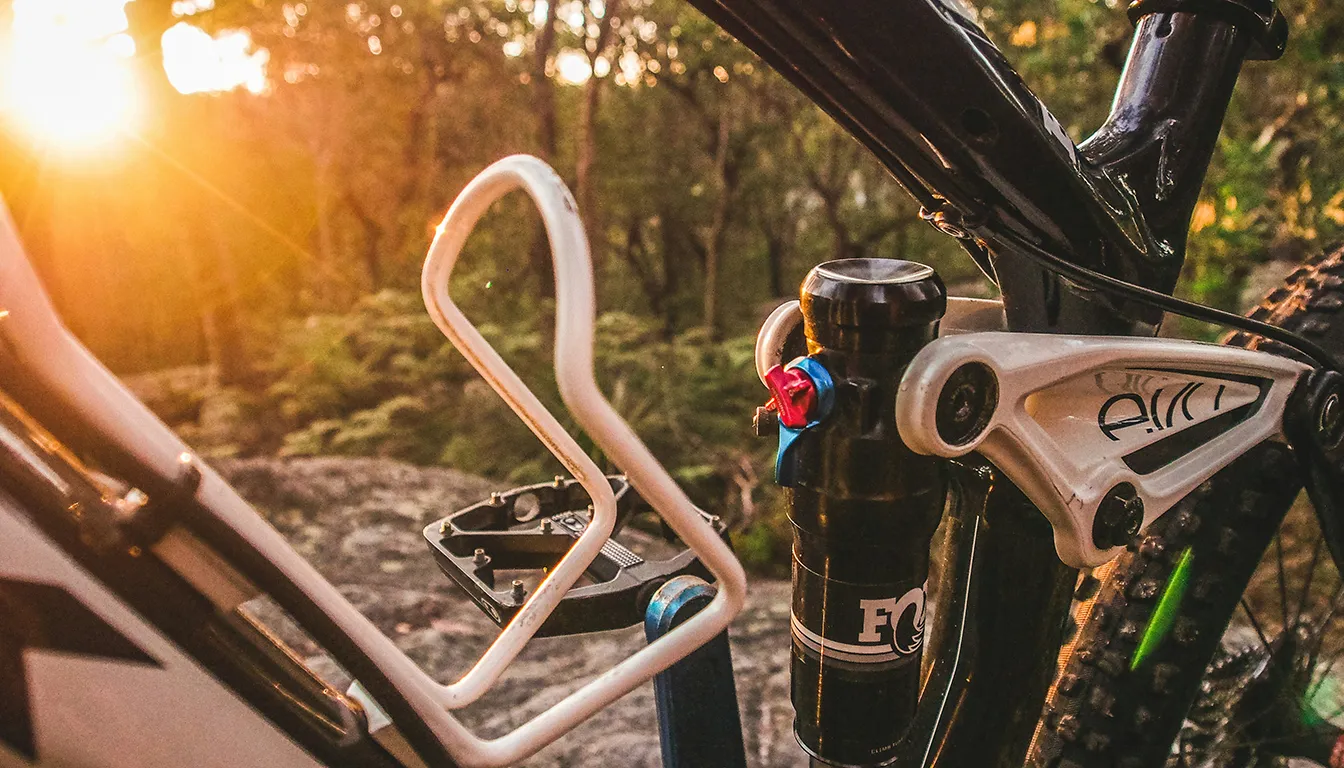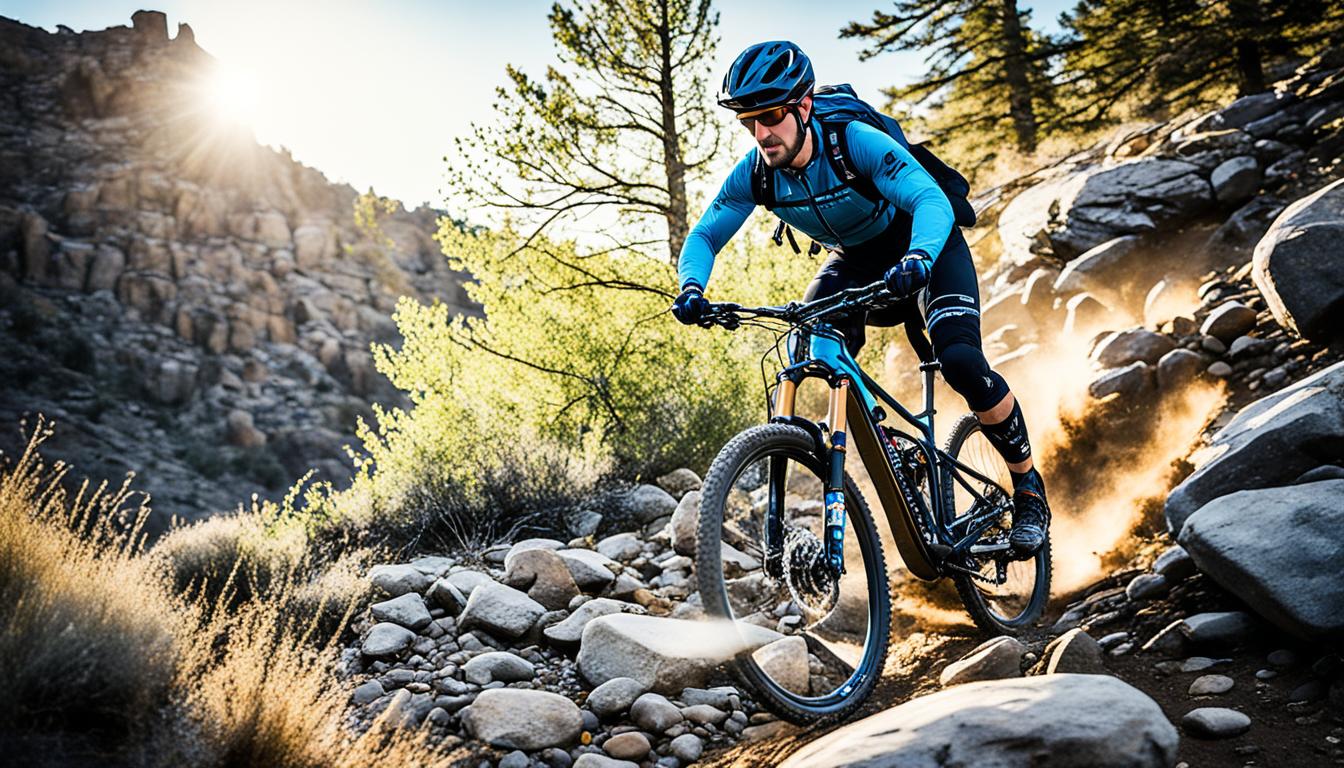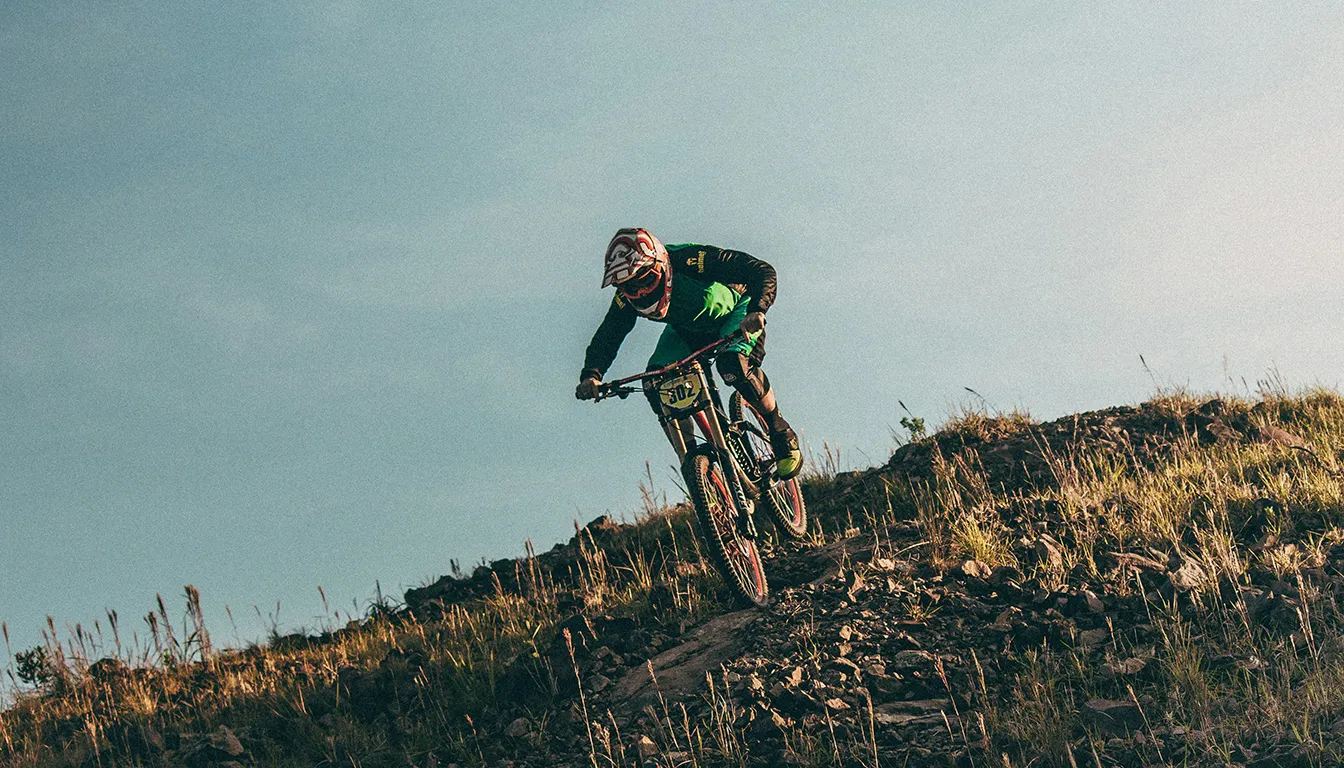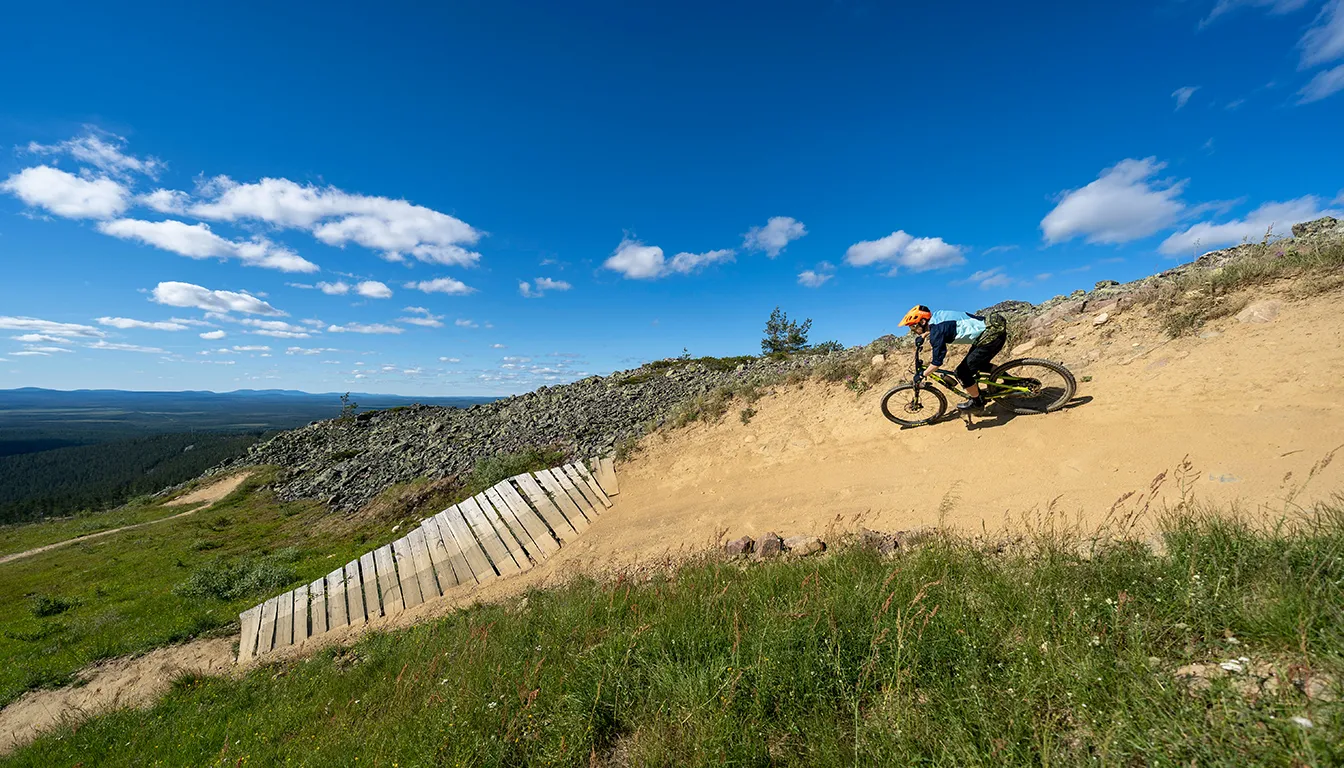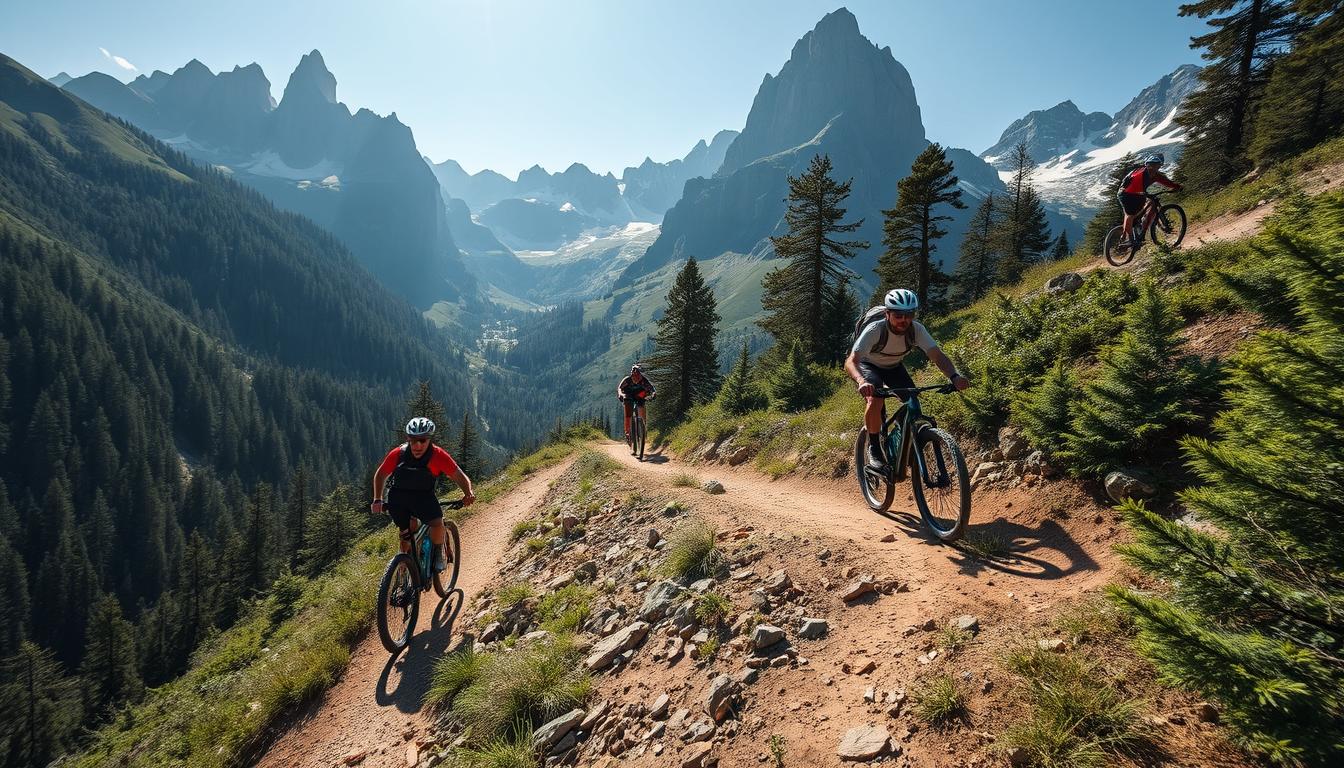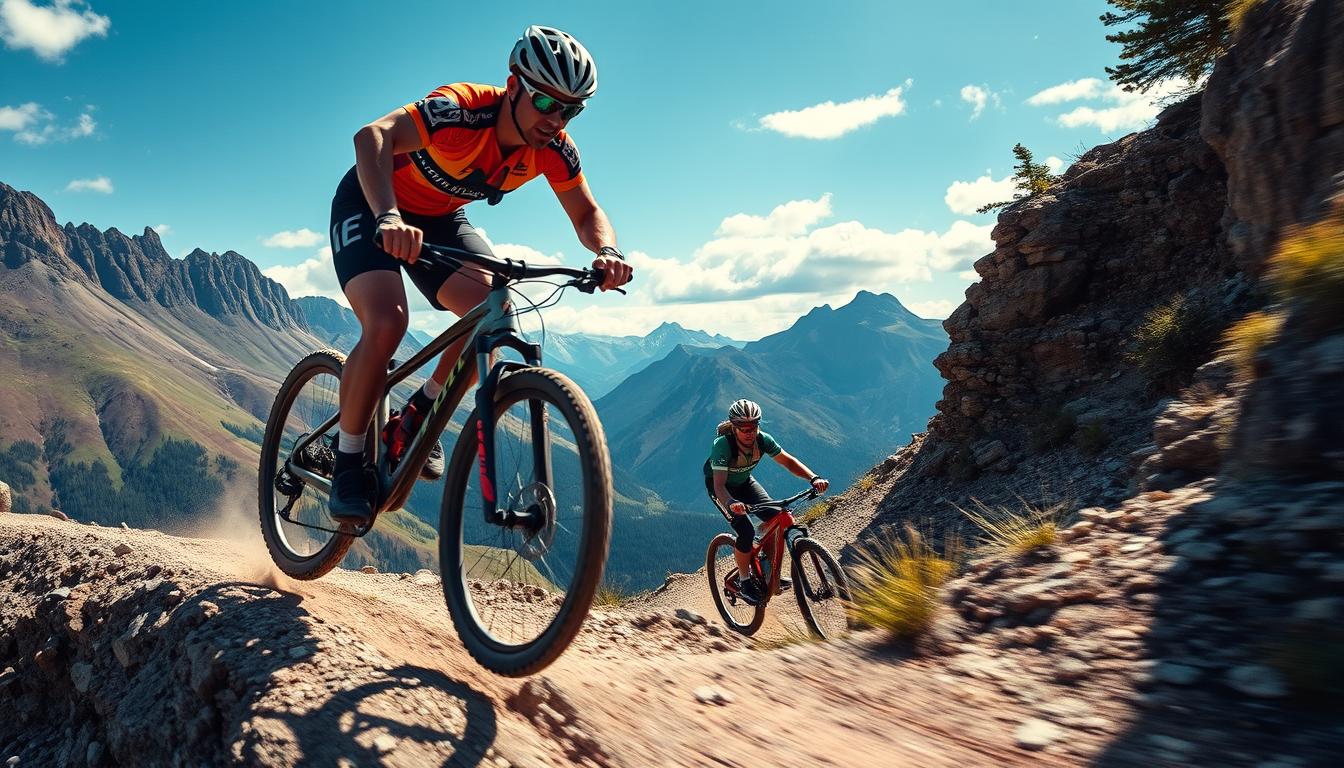After a day of thrilling rides, good recovery practices are key. They help your performance get better and lessen soreness. This makes you ready for more biking adventures. Proper recovery methods are vital. They help your cycling muscles and improve your overall fitness.
Regular recovery steps keep your biking skills sharp and prevent injuries. In the recovery phase, your body fixes and builds muscles. This prep helps you face tougher trails with more power. For more insights, visit essential recovery strategies.
Importance of Recovery in Mountain Biking
Recovery is essential in mountain biking. It helps athletes heal and strengthen muscles after tough rides. This muscle repair process is key. It not only aids in healing but also boosts muscle mass and strength. When cyclists train hard, their body needs time to recover. This prevents overtraining.
Understanding Muscle Repair and Growth
Muscle repair involves complex biological reactions. After hard rides, muscles get tiny tears. The body then fixes these tears. This leads to stronger muscles. Focusing on recovery helps cyclists perform better on their next adventures.
The Role of Recovery in Performance
Not recovering properly can hurt a cyclist’s performance. It can lead to more injuries and upset training schedules. A good recovery routine includes rest, quality sleep, and healthy eating. This ensures better performance and well-being. With proper recovery, cyclists are ready for tougher and longer rides.
Physical Recovery Techniques for Cyclists
After a hard session of mountain biking, there are good ways to help your body recover. Adding cycling stretches and foam rolling to your cool-down helps a lot. These steps make your muscles feel better and get you ready for your next ride.
Gentle Stretching after Rides
It’s key to stretch gently once you’re done cycling. This helps bring back flexibility and lessen muscle tightness. It’s particularly important for keeping your performance up. By focusing on the legs such as the quads, hamstrings, and calves, you target the tight spots. Doing these stretches regularly helps cut down injury risks and keeps you flexible for longer.
Foam Rolling: A Key to Muscle Relief
Foam rolling is great for many reasons, especially for easing muscle soreness and improving blood flow. It works by releasing muscle tightness and tends to be really helpful after cycling. Making foam rolling a part of your daily routine assists in muscle recovery. It makes getting back to it faster and reduces the risk of pushing too hard. A foam roller should be a must-have for keeping your muscles in top shape.
Hydration and Nutrition Guidelines
Recovering from mountain biking heavily depends on staying hydrated and eating right. Cyclists in all areas must focus on hydration to perform well and fix muscles. Drinking enough is vital for replacing the water lost during rides, particularly longer ones in different weather.
The Impact of Proper Hydration on Recovery
Having a good hydration plan is key after intense mountain biking. Riders need to drink plenty to make up for what they lose. It’s advised to drink 150% of the lost fluids over 4-6 hours after riding or racing. This is crucial in long events like cross-country racing, as dehydration slows you down. Drinking 500ml of water before riding and 500-750ml every hour during it, adjusting for sweat and heat, is essential.
Nourishing Your Body Post-Ride
What you eat after cycling is crucial for recovery. A balanced meal helps refill your energy. Eating carbs and proteins shortly after your ride helps fix muscles. Good choices include an omelette on toast, protein wraps, or yoghurt with nuts and fruit. These give you the nutrients needed for recovery. Avocados and fish are great for energy and fighting inflammation after tough rides.
Eating 30-60g of carbs every hour during long rides stops muscle tiredness and keeps energy up. For more tips on cyclist nutrition and its benefits, check out mountain biking nutrition. Adding creatine helps if your cycling is high-intensity, helping with muscle recovery and maintaining power.
Mountain Biking Recovery Exercises
Recovery routines are key to bouncing back from tough mountain biking sessions. They help ease muscle soreness and boost performance.
Low-Intensity Recovery Rides
For cyclists, low-intensity cycling is a top choice for recovery. Rides should be 30 to 60 minutes at a pace that allows talking. This aids blood flow and helps clear lactic acid in muscles.
Adding this cycling to your after-ride plan improves recovery. You’ll be geared up and ready for more biking adventures.
Walking for Active Recovery
Walking briskly after mountain biking aids in recovery. It maintains your heart health and eases muscle tightness. It also clears your mind, boosting your mood and health.
Combining walks with low-intensity biking ensures a well-rounded recovery. This is vital for any dedicated cyclist.
Rest and Sleep: Essential Components of Recovery
For mountain bikers, understanding the rest days importance is key. It can greatly improve your performance and health. Getting enough rest and sleep is at the heart of recovering well. Cyclists need to listen to their bodies to recover best.
Prioritising Sleep for Muscle Recovery
Sleep is vital for repairing and growing muscles. After hard rides, muscles need time to heal from small tears. You should aim for a minimum of eight hours of good sleep. This helps your body produce growth hormones essential for muscle repair. A consistent sleep schedule boosts recovery too.
Listening to Your Body’s Needs
It’s important for cyclists to know their bodies well when recovering. Knowing the difference between just feeling sore and real fatigue matters. If you need more rest, take it. This helps avoid the risk of overtraining, which affects nearly 60% of top athletes. Listening to your body not only helps in better performance but also keeps injuries at bay. Rest and sleep shouldn’t be overlooked; they’re crucial for your physical well-being.
Conclusion
Recovery practices are key for mountain bikers who want to do better on the trails. It’s important to stay hydrated, eat right, and rest well. Doing specific recovery exercises also makes a big difference. These steps help riders get ready for their next adventure.
Adding strength and interval training, yoga, and good food to a cyclist’s routine boosts their fitness. These activities, along with enough rest, stop injuries. They also improve biking skills over time.
Sticking to a recovery plan is not just taking care of yourself. It’s crucial for any cyclist who takes their training seriously. Making recovery a priority keeps you eager to ride. It turns every trip into a fun journey through stunning scenery.
FAQ
What are some effective recovery exercises after mountain biking?
Gentle stretching, foam rolling, and low-intensity recovery rides are great exercises after biking. They help make you more flexible, reduce muscle pain, and increase blood flow. This results in better muscle repair after hard workouts.
How does hydration affect recovery in mountain biking?
Staying hydrated is key to recovering because it stops dehydration, which can lower your performance. Drink water before, during, and after biking to help your body heal better. This keeps you healthy and performing well.
Why is nutrition important for post-ride recovery?
What you eat helps your body recover by refilling energy and repairing muscles. Eating foods high in carbs and protein after biking helps muscles grow and recover. This makes sure you’re ready for your next ride.
What is the significance of rest and sleep for cyclists?
Rest and good sleep are very important for recovery. They help your body release hormones that repair muscles. Try to get at least eight hours of sleep each night to better your recovery.
How can I determine if I need additional recovery time?
Listen to your body carefully. If you’re feeling tired rather than just sore, you might need more time to recover. Knowing the difference between being tired and sore helps you recover properly for better performance.
Can walking be beneficial for active recovery?
Yes, walking is an excellent low-key recovery activity. It helps with blood flow and gives you a chance to enjoy nature. This helps your body and mind heal.
What should my post-ride recovery routine look like?
After biking, stretch gently, use a foam roller, drink plenty of water, and eat nutritious food. Adding low-intensity rides or walks can also boost your recovery process.
